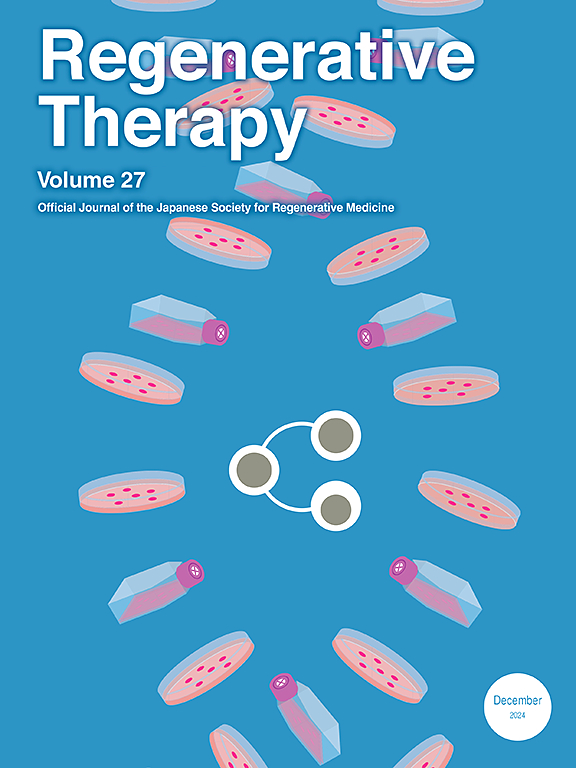The role of telomeres in leukemic stem cells function
IF 3.5
3区 环境科学与生态学
Q3 CELL & TISSUE ENGINEERING
引用次数: 0
Abstract
The length of a telomere provides insight into the replication history of a cell. Notwithstanding the fact that the telomerase enzyme is produced by stem and progenitor cells, a considerable proportion of the documented telomere degradation takes place at these levels. Sequential transplantation remains a challenge for hematopoietic stem cells (HSCs) transfected with telomerase, despite their ability to maintain telomere length. To optimize stem cell proliferation, additional parameters must be considered [1]. In contrast, unregulated telomere depletion induced by HSCs appears to play a significant role in the pathogenesis of bone marrow failure, as demonstrated by dyskeratosis congenita. It implies that telomerase dysfunction serves as a prevalent ultimate pathogenic mechanism in this heterogeneous hereditary disorder. Although this condition is not well defined, acquired marrow failure syndromes have been linked to mutations in critical telomerase components. In light of the discovery of leukemic stem cells (LSCs) and the desire to develop anti-leukemia treatments for this population, a comprehensive understanding of the telomerase biology within this cell compartment is required. Further research must employ LSC-rich primary samples that have been selected. A more thorough understanding of the correlation between telomere length and telomerase regulation in this specific population may facilitate the creation of innovative approaches or small molecule inhibitors that specifically target the telomerase enzyme complex.
端粒在白血病干细胞功能中的作用
端粒的长度提供了对细胞复制历史的洞察。尽管端粒酶是由干细胞和祖细胞产生的,但记录的端粒降解的相当大比例发生在这些水平。序列移植对于端粒酶转染的造血干细胞(hsc)来说仍然是一个挑战,尽管它们能够维持端粒长度。为了优化干细胞增殖,必须考虑其他参数。相反,造血干细胞诱导的不受调节的端粒耗竭似乎在骨髓衰竭的发病机制中起着重要作用,正如先天性角化不良病所证明的那样。这表明端粒酶功能障碍是这种异质性遗传疾病的普遍最终致病机制。虽然这种情况没有很好的定义,获得性骨髓衰竭综合征与关键端粒酶成分的突变有关。鉴于白血病干细胞(LSCs)的发现以及为这一人群开发抗白血病治疗方法的愿望,需要对该细胞区室内的端粒酶生物学进行全面的了解。进一步的研究必须采用已选定的富含lsc的初级样品。在这一特定人群中,对端粒长度和端粒酶调节之间的关系的更彻底的了解可能有助于创造创新的方法或专门针对端粒酶复合物的小分子抑制剂。
本文章由计算机程序翻译,如有差异,请以英文原文为准。
求助全文
约1分钟内获得全文
求助全文
来源期刊

Regenerative Therapy
Engineering-Biomedical Engineering
CiteScore
6.00
自引率
2.30%
发文量
106
审稿时长
49 days
期刊介绍:
Regenerative Therapy is the official peer-reviewed online journal of the Japanese Society for Regenerative Medicine.
Regenerative Therapy is a multidisciplinary journal that publishes original articles and reviews of basic research, clinical translation, industrial development, and regulatory issues focusing on stem cell biology, tissue engineering, and regenerative medicine.
 求助内容:
求助内容: 应助结果提醒方式:
应助结果提醒方式:


